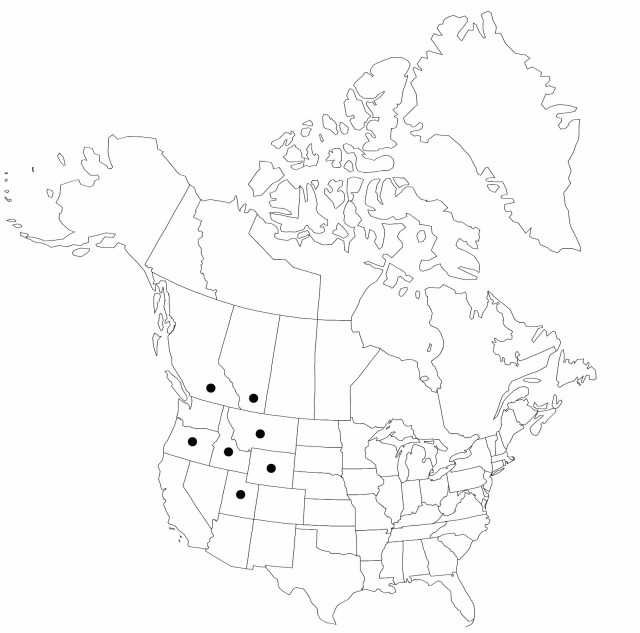Carex paysonis
Amer. J. Sci. 203: 89, plate 2, figs. 7–12. 1922.
Culms 15–50 cm. Leaves basal; proximal leaves with blades 3–6 mm wide. Inflorescences: spikes separate, elongate, 5–25 × 4–6 mm; proximal spike often pendent, long-pedunculate; lateral spikes 2–4; distal spikes erect, short-pedunculate. Pistillate scales light-brown or reddish black, margins occasionally hyaline, midvein not or, occasionally, prominent, same color as body, inconspicuous or lighter colored, and conspicuous, lanceolate, apex acute or short-mucronate, shorter or longer than and narrower than perigynia. Perigynia proximally pale-yellow, distally purple-black, veined, broadly ovate or obovate to circular, 3.5–4 × 1.5–1.75 mm, smooth; beak 0.3–0.5 mm, smooth.
Phenology: Fruiting May–Sep.
Habitat: Subalpine and alpine meadows
Elevation: 2100–3500 m
Distribution

Alta., B.C., Idaho, Mont., Oreg., Utah, Wyo.
Discussion
Some specimens of Carex paysonis in Glacier County, Montana, show transitions to C. spectabilis. The names C. podocarpa and C. tolmiei have been misapplied to specimens of C. paysonis.
Selected References
None.
Lower Taxa
"shortened" is not a number.
